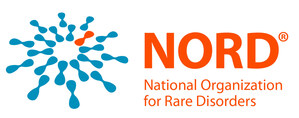WASHINGTON, Dec. 18, 2018 /PRNewswire/ -- A new report commissioned by the National Organization for Rare Disorders (NORD) and published today by the IQVIA Institute, demonstrates that the seven-year market exclusivity granted to drugs designated under the Orphan Drug Act of 1983 for rare diseases is working as intended. In nearly every case, orphan exclusivity did not inappropriately prevent generics and biosimilars from entering the market. Instead, the lack of generic competitors can be credited to their prospective return on investment being too small.
The report's major findings are as follows:
- Adding an orphan indication to an on-market drug does not correlate with a higher than average price increase. The average price of therapies grew at a slower pace in 8 out of the 10 years following the addition of an orphan indication to the label.
- Of the 503 approved therapies with an orphan indication at the time the research was conducted, 217 are no longer covered by orphan exclusivity or patent protection. Of these 217 therapies, 116 of them have generic or biosimilar competition.
- The median spending on the 101 orphan drugs without protection from competition and without competitors is only $8.6 million per year per drug.
- Around one-quarter of orphan drug approvals target populations smaller than 5,000 patients in the United States.
- Since 2009, on-market common-disease drug prices have grown more every year, on average, than orphan drugs.
"The data shows that the seven-year market exclusivity provision is working as intended as an incentive for developing rare disease therapies and is not being abused," said NORD's President and CEO, Peter L. Saltonstall. "The NORD-sponsored study illustrates that the dilemma of rising drug prices in our country should not be attributed to orphan drugs. It is my hope that this report will provide empirical data necessary to make informed decisions."
More than 7,000 rare diseases have been identified, affecting approximately 25-30 million Americans. Many affect only a few hundred or a few thousand individuals. Rare diseases tend to be chronic, serious and life-threatening. More than 80 percent are believed to be genetic.
Information on the report, including a link to the study, is available on the NORD website at www.rarediseases.org/rareinsights.
Editor's note: Peter L. Saltonstall, President and CEO of NORD, is available for interviews on the report. Contact Laura Mullen at [email protected].
About the National Organization for Rare Disorders (NORD)Ⓡ
The National Organization for Rare Disorders (NORD) is the leading independent advocacy organization representing all patients and families affected by rare diseases. NORD is committed to the identification, treatment, and cure of the more than 7,000 rare diseases, of which approximately 5% have an FDA-approved treatment or therapy. Rare diseases affect 25-30 million Americans, or 1 in every 10 people. More than half of those affected are children.
NORD began as a small group of patient advocates that formed a coalition to unify and mobilize support to pass the Orphan Drug Act of 1983. For more than 35 years, NORD has led the way in voicing the needs of the rare disease community, driving supportive policies and education, advancing medical research, and providing patient and family services for those who need them most. NORD represents more than 280 disease-specific member organizations as well as their communities and collaborates with many other organizations in specific causes of importance to the rare disease patient community.
SOURCE National Organization for Rare Disorders (NORD)
Related Links
WANT YOUR COMPANY'S NEWS FEATURED ON PRNEWSWIRE.COM?
Newsrooms &
Influencers
Digital Media
Outlets
Journalists
Opted In






Share this article